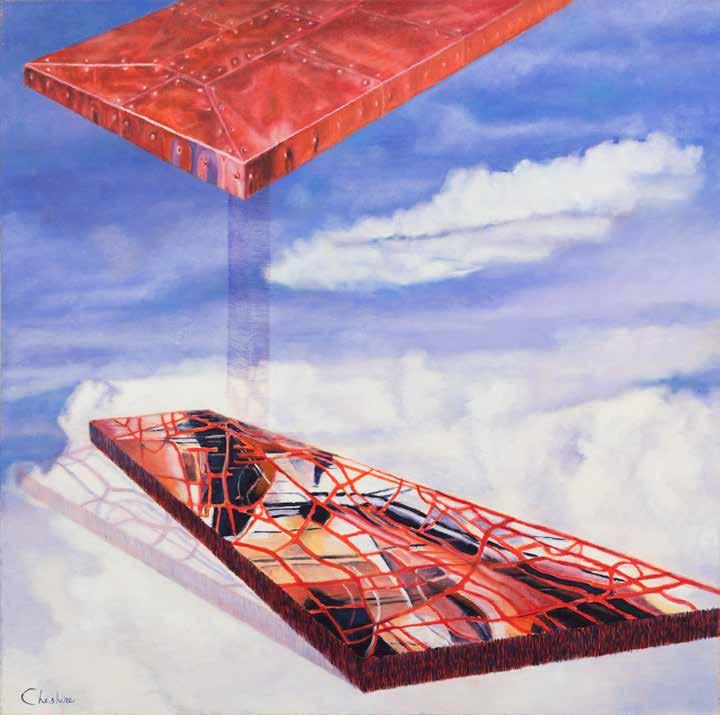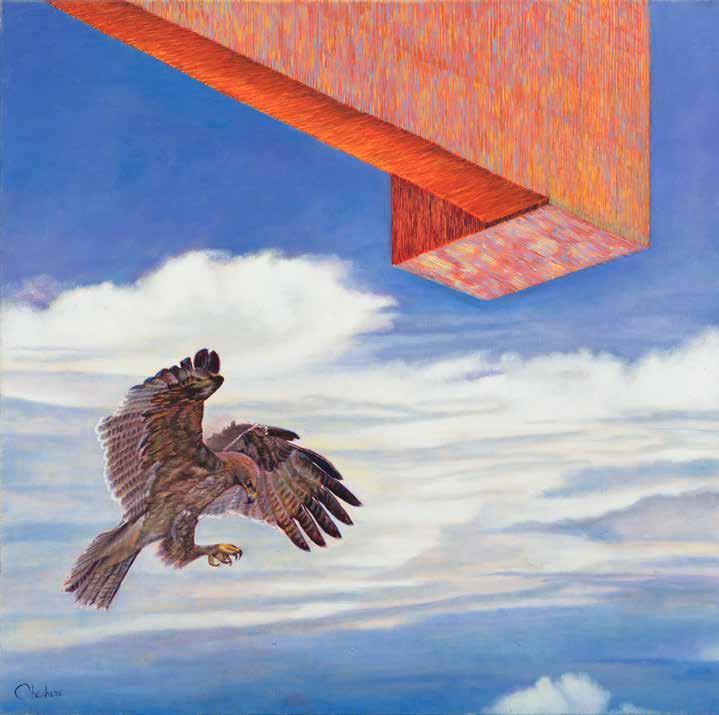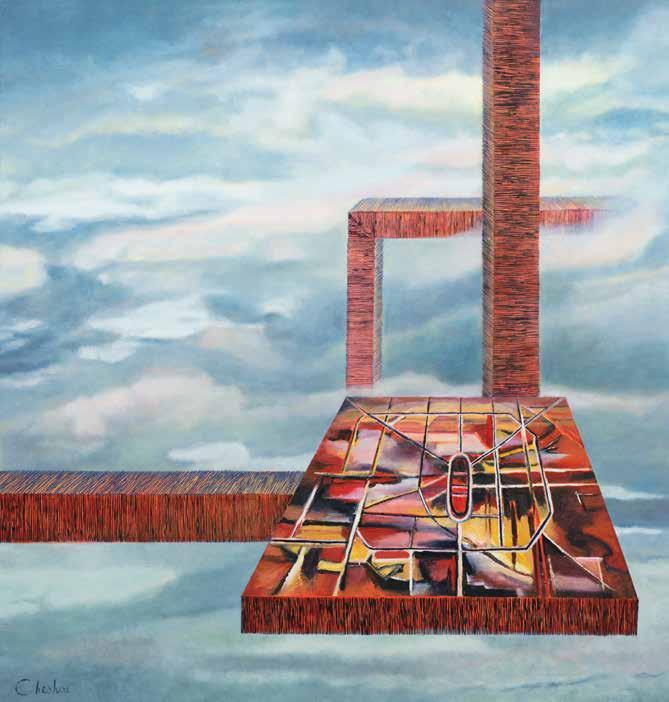STRATA FARAWAY NEARBY



FARAWAY NEARBY
2 June - 9 July 2017
Perc Tucker Regional Gallery
Publisher Gallery Services
Gallery Services, Townsville City Council
PO Box 1268
Townsville Queensland, 4810 Australia
ptrg@townsville.qld.gov.au
©Gallery Services, Townsville City Council and the authors 2017
ISBN: 978-0-949461-21-6
Organised by Gallery Services
Judith Jensen Acting Team Manager Galleries and Libraries
Erwin Cruz Exhibitions and Collection Coordinator
Louise Cummins Education and Programs Coordinator
Rob Donaldson Digital Media and Exhibition Design Coordinator
Jo Stacey Team Leader Administration Gallery Services
Carly Sheil Digital Media and Exhibition Design Officer
Samuel Smith Digital Media and Exhibtion Design Fellow
Leonardo Valero Exhibitions Officer
Jacquelina Jakovljevic Exhibitions Officer
Sarah Welch Public Art Officer
Sarah Reddington Education and Programs Officer
Nicole Richardson Education and Programs Assistant
Danielle Berry Arts Officer
Wendy Bainbridge Gallery Assistant
Jo Lankester Gallery Assistant
Madisyn Zabel Gallery Assistant
Chloe Lindo Gallery Assistant
Cover Image:
Barbara Cheshire
Ascent: Fishnets, Pathways and Paddocks [detail] 2016
Artisan oil on canvas
153 x 101 cm
Perc Tucker Regional Gallery
Cnr. Denham and Flinders St Townsville QLD 4810
Mon - Fri: 10am - 5pm
Sat - Sun: 10am - 2pm
(07) 4727 9011
ptrg@townsville.qld.gov.au
whatson.townsville.qld.gov.au
PercTuckerTCC
Published on the occasion of
2 June - 9 July 2017
Perc Tucker Regional Gallery
Contributing Authors
Dr Judith Jensen / Dr Jennifer Mulcahy
Publication Design and Development
Rob Donaldson
Photography
All photographs by Aaron Ashley, unless otherwise noted.
Strata: Faraway Nearby is a collaborative project by Barbara Cheshire and Deborah Cavanagh and it is with pleasure that Perc Tucker Regional Gallery is able to present this body of work to the Townsville community. Barbara has worked many years as a visual artist and educator while Deb is a well-known local artist whose work is well respected.
Central to this exhibition is the individual’s connection to place. Deb writes, “Place forms our identity, it shapes who we are and how we interact with people and the world around us. Place is a two way interaction between ourselves and the world around us.” The exhibition illustrates the artists’ experiences of places, layering similar and diverse physical, emotional and spiritual responses to the same and different landscapes to create works that resonate with us all.
The two year collaborative process began with discussions about their travel abroad and about the places nearby that had strong connections for them. Barbara tells us that, “In spite of the commonalities of place, we discovered the development continually came back to singular perceptions and of subjectivity and objectivity. These arose out of the engagement with and in each place through the experience of the individual.”
Their conversations led to the idea of producing a single, large work - a map depicting the essence of those places significant to them. Deb writes that “as the artists worked together on the two by two metre canvas they realised the colours and marks represented, not simply their recent travels, but also their changing experience of place throughout their lives.” As they completed the subsequent works from the twenty images of the sections of the large canvas, Barbara and Deb found that individual images spoke to them personally and in the development of the artwork revealed deeper emotional and spiritual understanding of their personal experience. The exhibition highlights the exceptional talent of these artists. I encourage you to explore each work particularly the layers of meaning places may have for each of us
Dr Judith Jensen Acting Team Manager Galleries and LibrariesImage right: Barbara Cheshire
Firmament, Tall Trees and Technology [detail] 2016
Artisan oil on canvas
153 x 101 cm
Image overleaf: Deborah Cavanagh
Dusk [detail] 2016
Acrylic on canvas
153 x 101 cm



Our individual response to a specific landscape, visually, emotionally and spiritually is determined by our ability to intuit the energies and spiritual qualities endemic to each place. Allied to these intrinsic qualities is what we bring with us…. the perception and understanding of place influenced by who we are and what we know… the total of our life experience. Visual artists and long-time friends Barbara Cheshire and Deborah Cavanagh had numerous discussions about the intricacies involved in the visual interpretation of place, and the ways in which common and disparate connections to a landscape of special significance to them both could be realised.
These discussions strengthened after both returned from holidays in late 2013. Cheshire had been to a retreat in Kerala, India to experience the colour and culture of a different land and Cavanagh to Lord Howe Island at nesting time to see the millions of seabirds setting up house on this tiny set of cliffs in the middle of the Tasman Sea. Invigorated by their experiences, they talked about the similarities of the places they had been, to those places they loved closer to home. The idea for a collaborative project exploring place took root.
This period was also a pivotal time for both artists, Cavanagh had sold her house and was preparing to leave Townsville where she had lived for the past thirty years and considered this project a way of saying goodbye to a place and to friends who had nurtured and supported her during this time. Cheshire had recently retired after a long career at the Barrier Reef Institute of TAFE where she had taught and mentored students for many years and was now enjoying exploring new directions for her practice. However it wasn’t until 2015 that work for Strata: Faraway Nearby began in earnest.
Cheshire had been exploring the incorporation of maps and response to place in her work, and from this, and further discussion with Cavanagh, the idea of producing a single large canvas depicting and imbued with the essence of their favourite places, as well as their recent experiences in vastly different environments evolved.
For Cheshire these were the recently discovered state of Kerala, in India, with its vibrant colours and ancient culture, Pimlico where she lives, with close by, the then Barrier Reef Institute of TAFE campus where she had taught for many years; for Cavanagh it was the recently visited Lord Howe Island and the suburb of Mundingburra where she had lived and raised her daughters. Both artists felt a special connection with Castle Hill and, at its base, the West End Cemetery where unmarked graves litter the outskirts, and the Atherton Tablelands where Cheshire grew up, and which, for Cavanagh, was a place of reprieve from the fierce heat of the Dry Tropics.
Having each interpreted the energies unique to the specific places they were responding to, the artists then used this knowledge to create the large collaborative work, in effect, forming a new, cumulative layer of emotion and understanding based on similar and diverse experiences. From this initial work entitled Strata: Faraway Nearby source images/ideas for the smaller individual and collaborative works were drawn. Strata referencing the many layers of emotion and experience, both similar and diverse that influence the way we interact with the world around us, and Faraway Nearby referencing the different landscapes which hold special meaning for each artist…. places of spiritual and emotional connection.
Utilizing maps of the sites they were responding to, and including a symbolic depiction of a plane’s wing as interconnection, they drew up an image that satisfied them both and transferred this to the two metre square canvas and began painting. Their use of vibrant colours coupled with a powerful array of mark making depicting their emotional response to the individual sites As the work progressed, the artists realized that the colours they chose and the marks they were making were responding to more than the initial feeling of connectedness to a specific place... there was also a response to changing perceptions of what place meant to each of them throughout their lives.
An important component of this exhibition is a clothesline, a Hills Hoist, which is of special significance for Cheshire. Invented by Lance Hills in 1946, the year of her birth, a hoist had been a constant in her life and utilised for numerous purposes, both creative and practical. Preparing for Strata: Faraway Nearby, the old hoist with its peeling pink paint became an important support, physically and metaphorically as it became their viewing platform and place for discussion and decision making. Cavanagh says …We noticed that as we worked we were usually on opposite sides of the table. We would both reach an impasse at the same time. The next step was to hang the canvas on the clothesline, make cups of tea and sit on plastic garden chairs, looking at the painting, drinking our tea and talking about where to go next...
…The process was, by and large, relaxed yet fully engaged. Barb and I use different palettes. Hers leans towards deep reds, burgundies and earth tones-born of fire. Mine are a higher key, blues, yellows, greens-water colours. From time to time I noticed Barb’s palette was beginning to dominate so I would push back with bluer, lighter tones. Sometimes Barb would comment on “too much acid blue” so we would tone it down. The acid blue problem persisted and was not resolved until Barb and I went to Ingham for an art competition she was judging. As we looked at one very large painting we agreed that the colours were close to ours. Barb had an “ahah” moment. “It’s Prussian blue” she said, “Let’s try that instead of the Pthalo”. And so we did.
As work and discussions progressed around the old hoist, the artists began to regard its overall degeneration and peeling pink paint as symbolic of the slowly changing attitudes towards gender equality as experienced by both women throughout their lives.
Once the initial large canvas was finished, the artists pored over it using cut out squares of paper to identify thirty small sections that could be visually translated on to large canvasses. They decided that each would complete ten individual works and begin another five collaborative works with the intention that one artist would commence the work and the other complete it.
In practice this proved challenging as both artists found it difficult to finish the work commenced by the other without supplanting the initial concept with their own. A resolution was reached whereby the initial work became a preliminary underpainting and, reminiscent of a pentimento work, was then overpainted by the second artist whose concept became paramount. Cavanagh cites the example of her attempt to respond to one of the designs which featured a cross, a lapsed Catholic, she felt that “the pursuit of this image would take her on a personal journey well outside the purpose of this project” Cheshire, “on the other hand, recognised a deep spiritual connection to the image and produced a highly charged interpretation in her work”, Beyond Division. Similarly when Cheshire started responding to a source image which was almost black with just a faint glow of light she found it wasn’t working for her and Cavanagh took it over, producing the work New Life, the final image no longer dark, but glowing with reds and greens, a synthesis of Cavanagh’s feelings about her experience on Lord Howe Island.
Some of Cheshire’s most powerful works reference the Atherton Tablelands where she was born and raised. You Are Your Landscape depicts the rainforests, rivers and lakes but also mapping Cheshire’s spiritual journey where she first experienced “…The awe, and wonder of place and the conviction that there was something greater than humanity: a Divine essence so to speak”.
The haunting works Firmament, Tall Trees and Technology and Open Wound again map to Cheshire’s Tableland connections with the first work also referencing the landscape of Kerala. The Atherton Tablelands used to be referred to as the place of Tall Trees, however many of these trees have since been cleared for agriculture “…the rich earth now bared to the elements”. The works also relate to the tragic death of Cheshire’s father who was killed when the plane he was in crashed into the side of Mt Elliot. As Cheshire writes, “The wounds in life will always happen and often remain hidden” A third work referencing the loss of her father is entitled Defying Comprehension, and “represents the calm of acceptance that eventually arises after the storm when the difficult experience has been the death of someone you love”.
Meeting Place alludes to Cheshire’s time spent in tertiary learning places and the ordered chaos that seems integral to such institutions. The essence of place found here influenced by study, teaching and developing friendships. The meditative cooler palette Cheshire has used in Active Silence imbues the work with a sense of quietness and tranquillity. The work references the outskirts of the Atherton Tablelands and of Kerala, places Cheshire refers to as her “thin places”…Places where she experienced a feeling of refreshment and a re-vitalising of the spirit.
Cheshire’s series of smaller works featuring clouds had their genesis in the plane on her flight back from Kerala and document her emotional and spiritual response to the time spent there and her enjoyment of being part of gathering of people of many faiths “seeming to practice a similar philosophy”.
For Cavanagh, the Strata project has proved both challenging and life changing. By 2016, she was feeling restless; the foundations of all the Strata: Faraway Nearby works were on canvas but she needed time out before completing the works. Buying a ute, and storing the unfinished canvasses with Cheshire, she hit the road, travelling down the east coast seeking inspiration.
This time out became a period of great intellectual and creative stimulus for Cavanagh, as she explored new landscapes, visited galleries and reconnected with some of her favourite Australian artists whilst also immersing herself in Australian music and literature, most notably authors, Judith Wright, Peter Carey, and Michael Leunig enjoying their insights into life, people and the landscape which resonated with her. Six months later Cavanagh was back in Townsville refreshed and ready to complete the Strata: Faraway Nearby canvasses. She found a space to work at the Mundingburra Scout Den which was nestled amongst a forest of 100 year old raintrees, with plenty of room to spread out all her canvasses it proved an ideal location.
Cavanagh’s works are accompanied by excerpts of prose which offer further insight into her works, many of which are about change and renewal.
Where her Dry Season speaks of the end of the dry ……that relentless build-up of heat and humidity without promise of reprieve as everyone waits for the rain; Wet Season, captures the tension of the wait suddenly and dramatically broken by thunder, lightning, and driving rain.
Change 1 and Change 2 depict an increasingly dry landscape and pose the question as to what will happen if the wet doesn’t come, whereas Connected 1 and Connected 2 remind us of the magic to be found beneath the mangroves where the river meets the sea and the landscape feels washed clean and renewed.
To escape the summer heat of Townsville, Cavanagh would head to the Tablelands after work on Fridays. Dusk, captures that moment of arrival…the rich texture of the Atherton Tablelands at dusk, the cool moist air and the feeling of relief and softening of tension that respite brings, whereas in the related work Dawn, there is a feeling of expectation, of new beginnings, the landscape and sky just touched by light.
For Cheshire and Cavanagh producing the paintings for this exhibition has been an emotional, intellectual and creative journey with each place mapped a reservoir of memories/ connections revisited and new insights gained.
It is hoped, that you, the viewer will gain an insight into the myriad layers of meaning that contribute to our understanding and feelings of connection to those special places we all have.
Dr Jennifer Mulcahy


Barbara Cheshire and Deborah Cavanagh
Strata: Faraway Nearby 2015
Acrylic on canvas
176 x 163 cm
Image previous: Barbara Cheshire and Deborah Cavanagh
Strata: Faraway Nearby [detail] 2015
Acrylic on canvas
176 x 163 cm
Active Silence 2016
Artisan oil on canvas
153 x 101 cm




Ascent: Fishnets, Pathways and Paddocks 2016

Artisan oil on canvas
153 x 101 cm

Beyond Division 2016


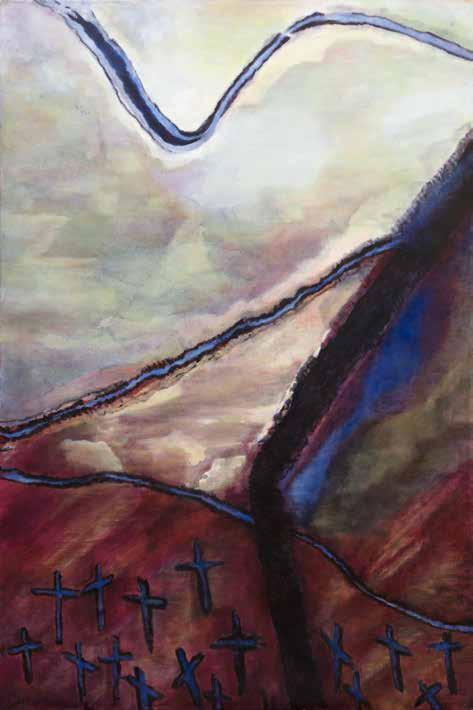
153
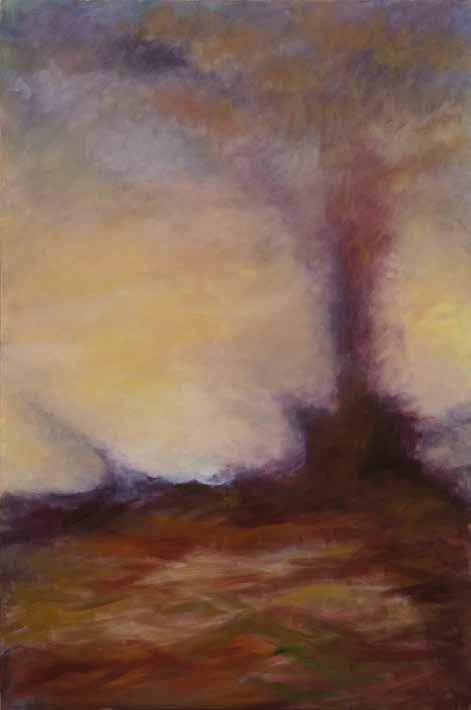
Colour of Passion 2016
Artisan oil on canvas
153 x 101 cm

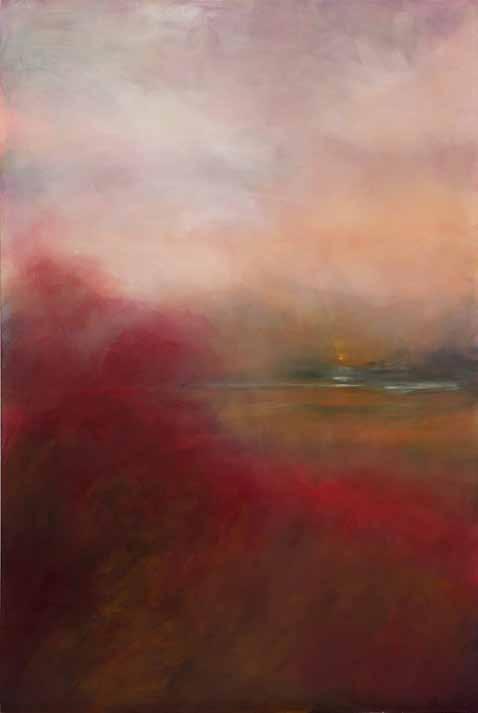
Defying Comprehension 2016
Artisan oil on canvas
153 x 101 cm
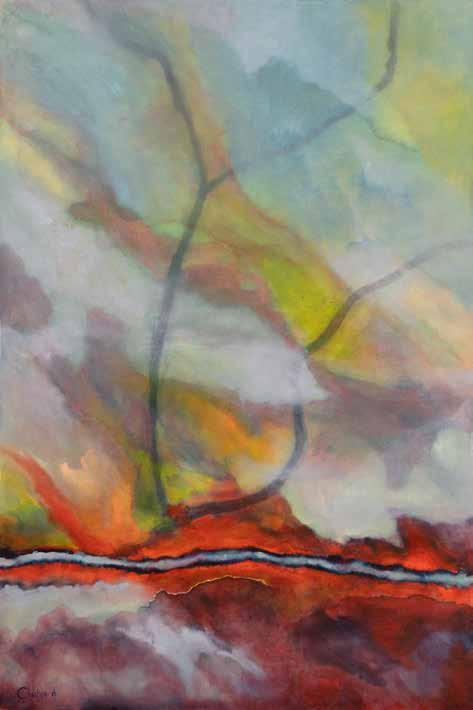
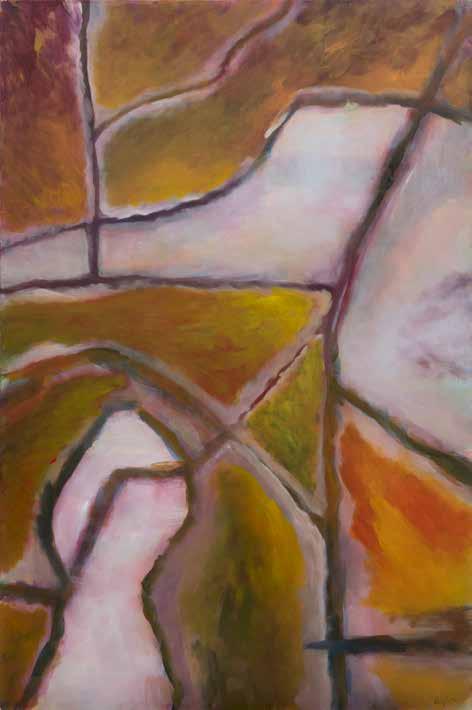
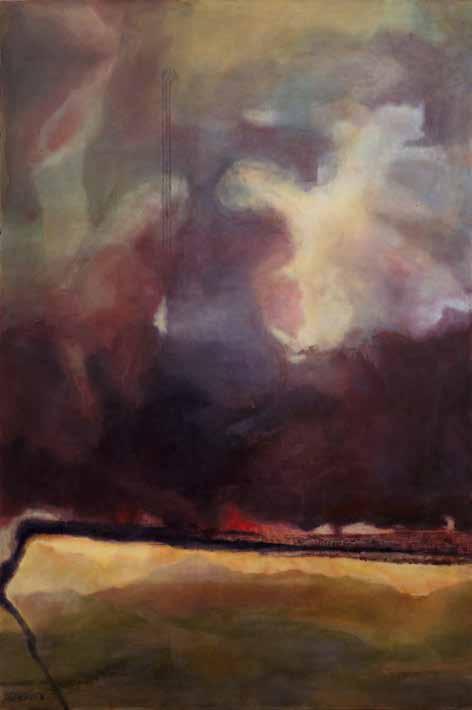
Acrylic on canvas
153 x 101 cm
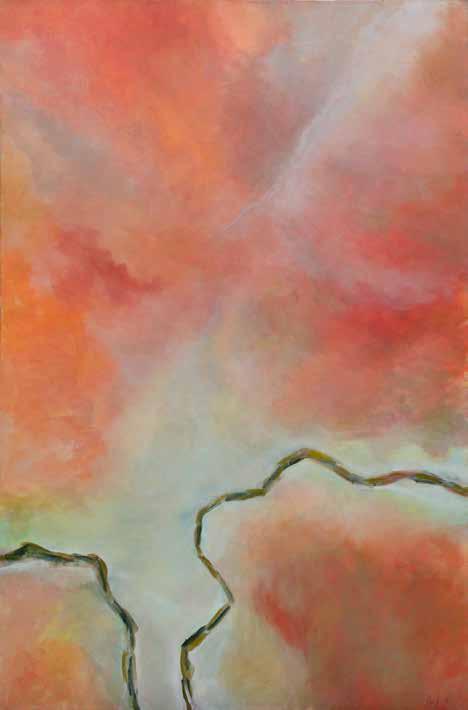
From the Ashes 2016
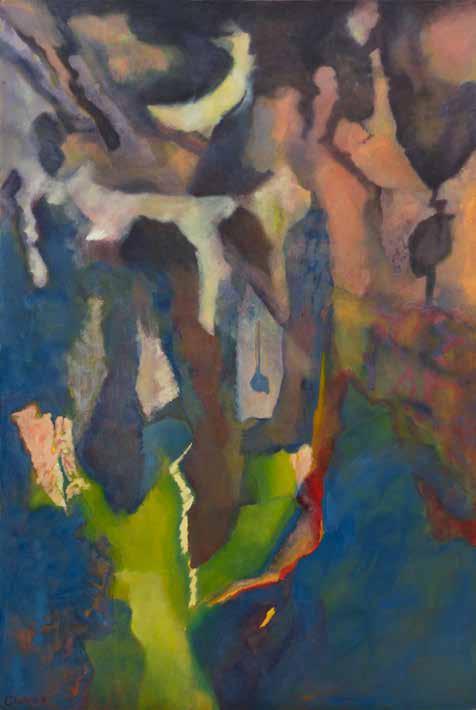

Artisan oil on canvas
153 x 101 cm

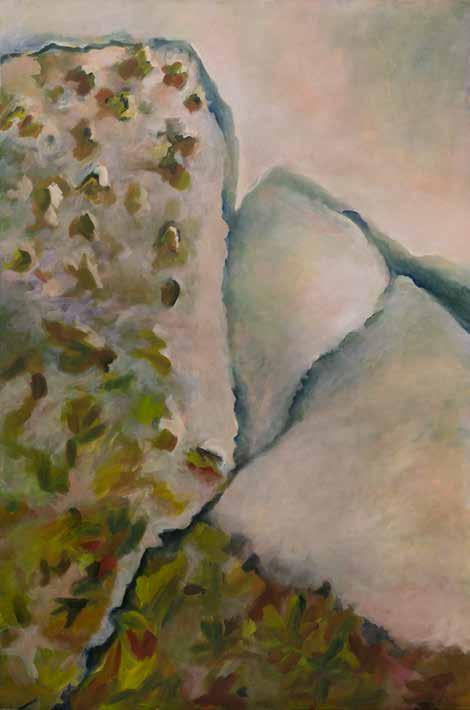

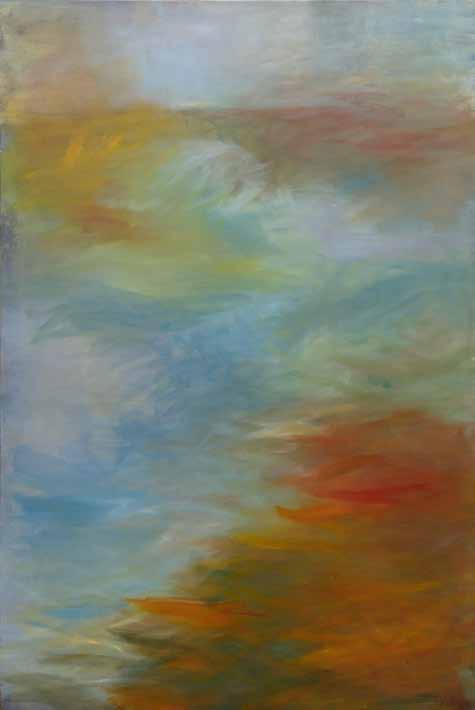

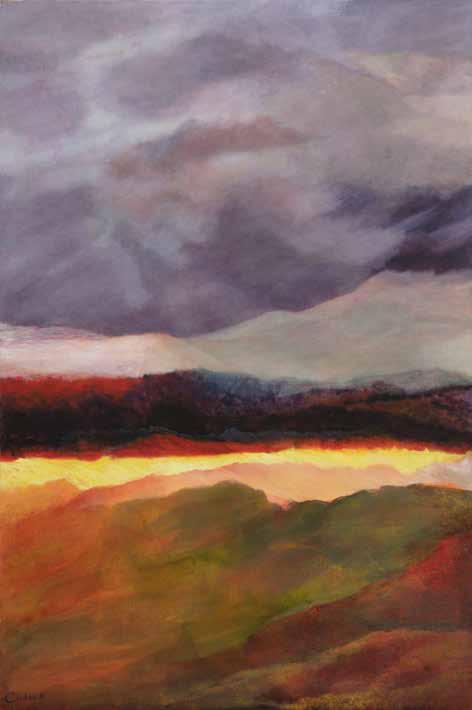
Interweaving Stories 2015
Artisan oil on canvas
77 x 77 cm
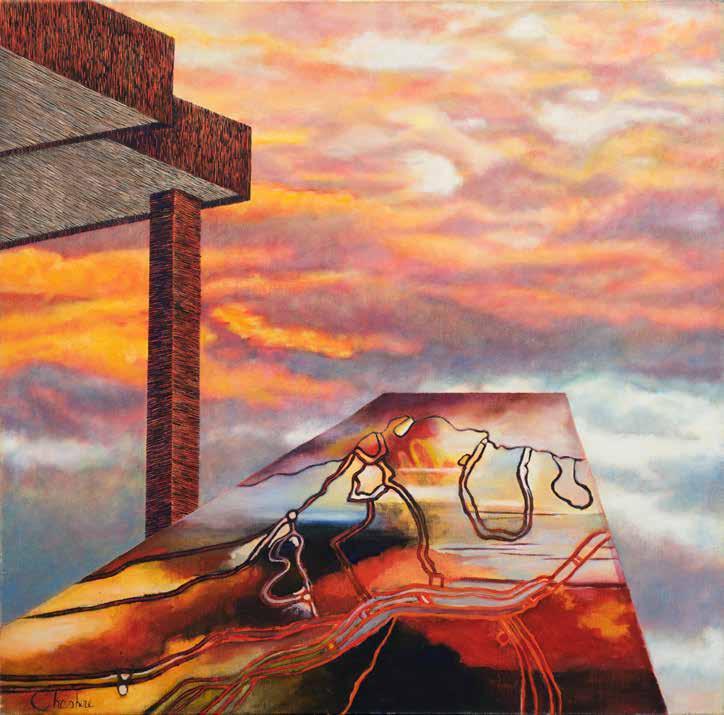
Passing Timelines 2015
